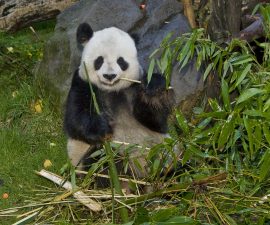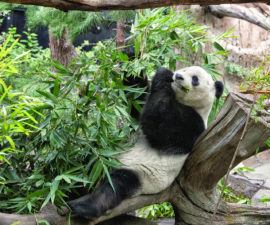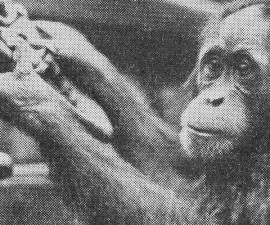BY Peggy Scott and Wendy Perkins
Photography by Ken Bohn
No matter where you look, there is something incredible to see—and hear. Representing a place famous for its biodiversity, Conrad Prebys Africa Rocks is an immersive experience of that awe-inspiring continent. There are signs to guide you, yet the landscape alone tells you you’ve arrived in a special place. Strange, startling, and beautiful plants stand sentry: red hot poker trees; slim, young baobobs; and multi-branched, “Suessical” Madagascar ocotillos—also aptly called octopus trees. The plant life becomes “curiouser and curiouser,” and there are more marvels ahead—and in every direction.
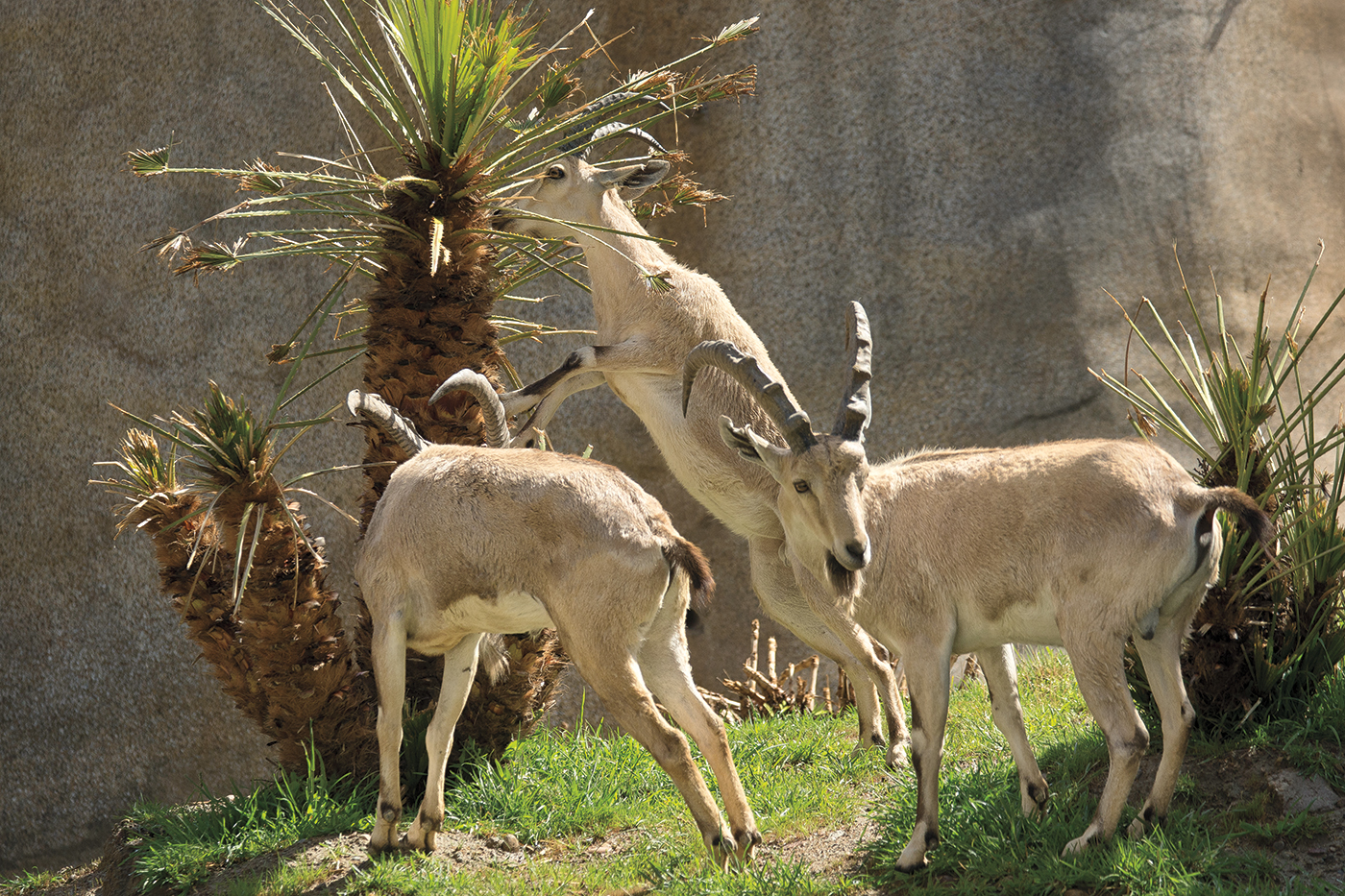
MAKING THEMSELVES AT HOME
The Nubian ibex are enjoying all the perks of their new home: rocks to leap on and from and some interesting plants to nibble.
Keeping Up with the Kopje
The savannas in many countries in Africa are dotted with exposed stone mounds called kopjes, which offer special shelter to a wide variety of animals. At Africa Rocks, the Kopje’s granite boulder habitat is shared by chubby little rock hyraxes, sleek dwarf mongooses, and nimble-footed klipspringers. They all have their favorite rocks to sun on, tucked-away hiding places, and the chance to get up high and see the Zoo—and visitors—around them.
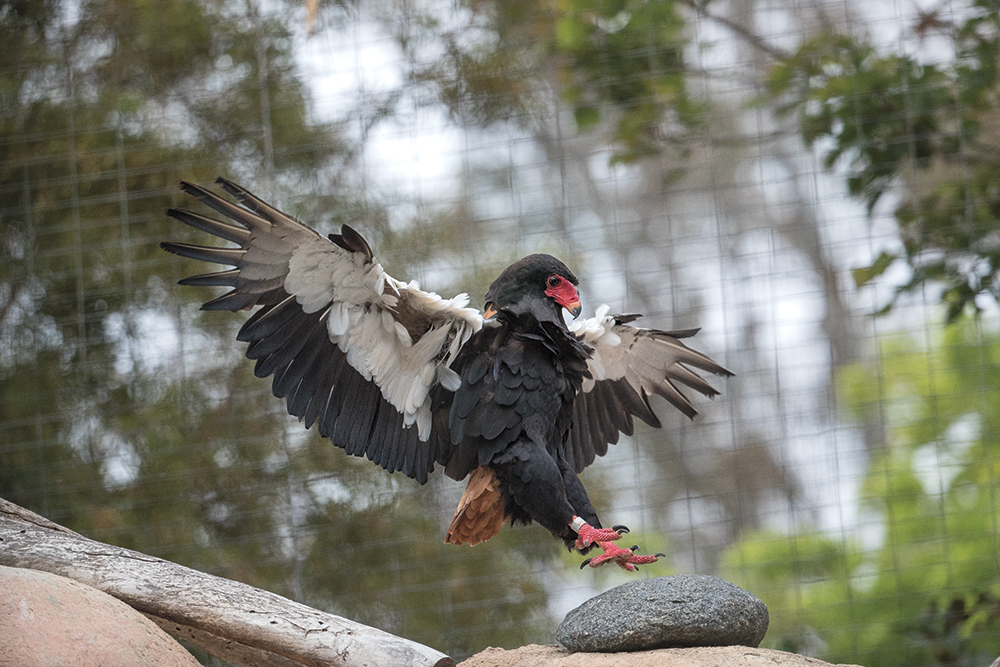
STICKS THE LANDING
Built with this acrobatic bird in mind, the bateleur eagles aviary offers plenty of wing-room.
One of the most striking Kopje inhabitants is the bateleur eagle. With its glossy black and gray plumage accentuated by a bright red face and feet, it is a photogenic eye-catcher. You may get a chance to see this avian wonder’s six-foot wingspan, as the habitat offers room for the birds to spread their wings and fly from perch to perch, showing the agile aerobatics they are known for (bateleur is French for “street performer”). The Kopje is also home to the red-leafed rock fig, a hardy, semi-decidous ficus known as the “rock splitter” for its ability to grow sideways and on rock faces and outcrops, as its branching roots seek water and nutrients.
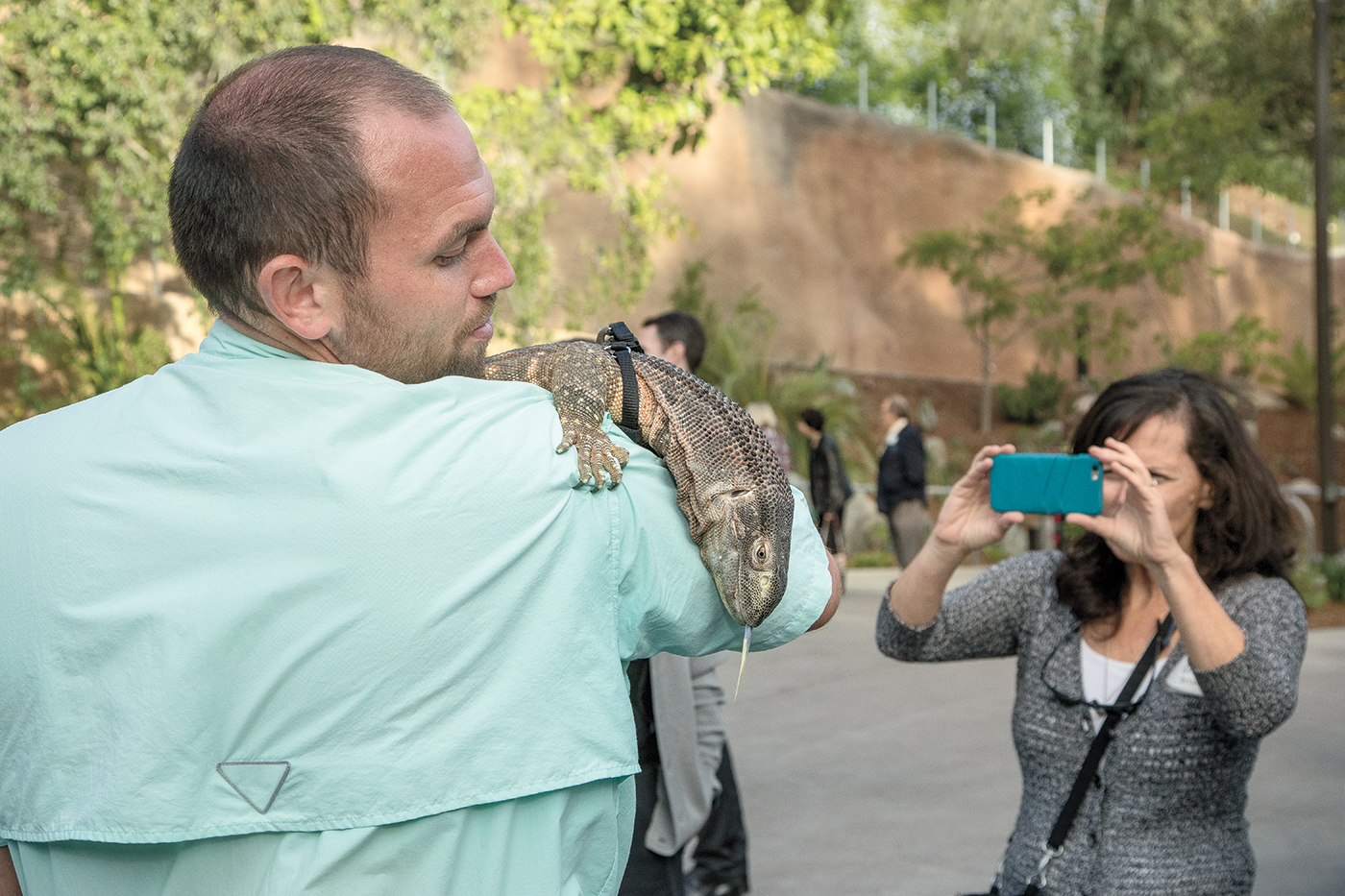
READY FOR THAT CLOSEUP
At the Africa Rocks Stage area, guests can have a close encounter with a variety of animal ambassadors.
Get the Big Picture
Africa Rocks gives a glimpse into the amazing biodiversity found on the continent of Africa, which is home to the greatest variety of iconic animals and plants on Earth. And while this is the largest and most complex exhibit area we’ve built to date, we couldn’t fit in all the vastness we wanted to represent. So take a few moments to ponder the gorgeous infographic-style mural just below the Kopje. It breaks down the mind-boggling numbers: 8 of the world’s 34 biodiversity hotspots are in Africa; 5,000 types of fish; 2,000 bird species; 1,229 mammal species, and more. You’ll discover that Africa is home to the world’s largest desert, the largest continuous rain forest, and the biggest lake. In addition to counting out the wildlife and geographic stats, the infographic shows that humans count, too—highlighting some of San Diego Zoo Global’s conservation efforts there.
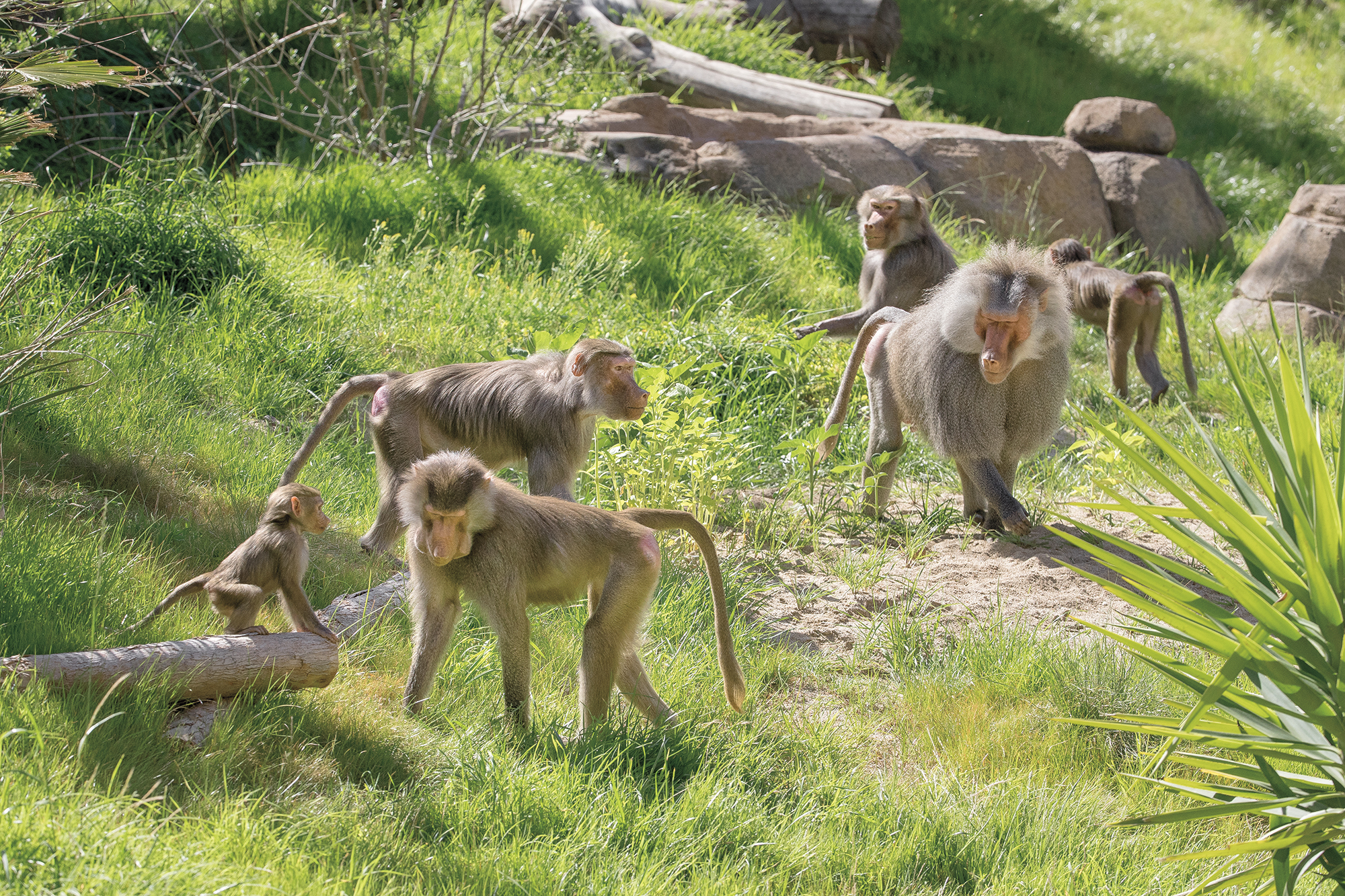
A PART OF THEIR WORLD
Take a peek into a day in the life of our active, social hamadryas baboons.
Rock Me, Hamadryas
Approaching the hamadryas baboon exhibit in the Ethiopian Highlands, you’re likely to feel as though you’ve stepped into a day in the life of an active family—any family. Our hamadryas troop is 20 strong, and there’s always something going on: the grownups socialize while keeping an eye on the rambunctious youngsters. The kids romp and play until someone gets their feelings hurt, and then they scamper back to the protective arms of Mom or a trusted Auntie.
Their spacious habitat gives these baboons many options throughout the day—and they use all of them. Reciprocal grooming strengthens group bonds, and the steady presence of leader Elvis makes for a communal atmosphere. The dynamics of the group’s complex social structure, combined with their intelligence, curiosity, and agility, result in activity that can make it hard for guests to tear themselves away.
Continuing into the Ethiopian Highlands, you will discover another impressive African primate: the gelada. This silky-maned monkey seems to wear its heart on its chest, but the characteristic red, hourglass-shaped patch of skin actually serves as a sign of reproductive readiness. As a primate that eats mostly grasses, the geladas have access to plants growing in the exhibit (as well as the selected grasses they are provided as their regular diet), and watching them pluck grass is fascinating. If you think all blades are created the same, pause to appreciate the painstaking care with which each gelada selects its green morsels. Green thumbs and sophisticated palates apparently go hand in hand!
The geladas share their rocky habitat with another highlands species: a group of Nubian ibex. Their dramatic headgear doesn’t seem to slow them down a bit. These members of the goat family nimbly race up the hillsides and leap up onto the rocks for a wide view of their surroundings. They nap under rocky overhangs and even stand up on their hind legs, carefully balancing, to nibble leaves from the trees in the exhibit.
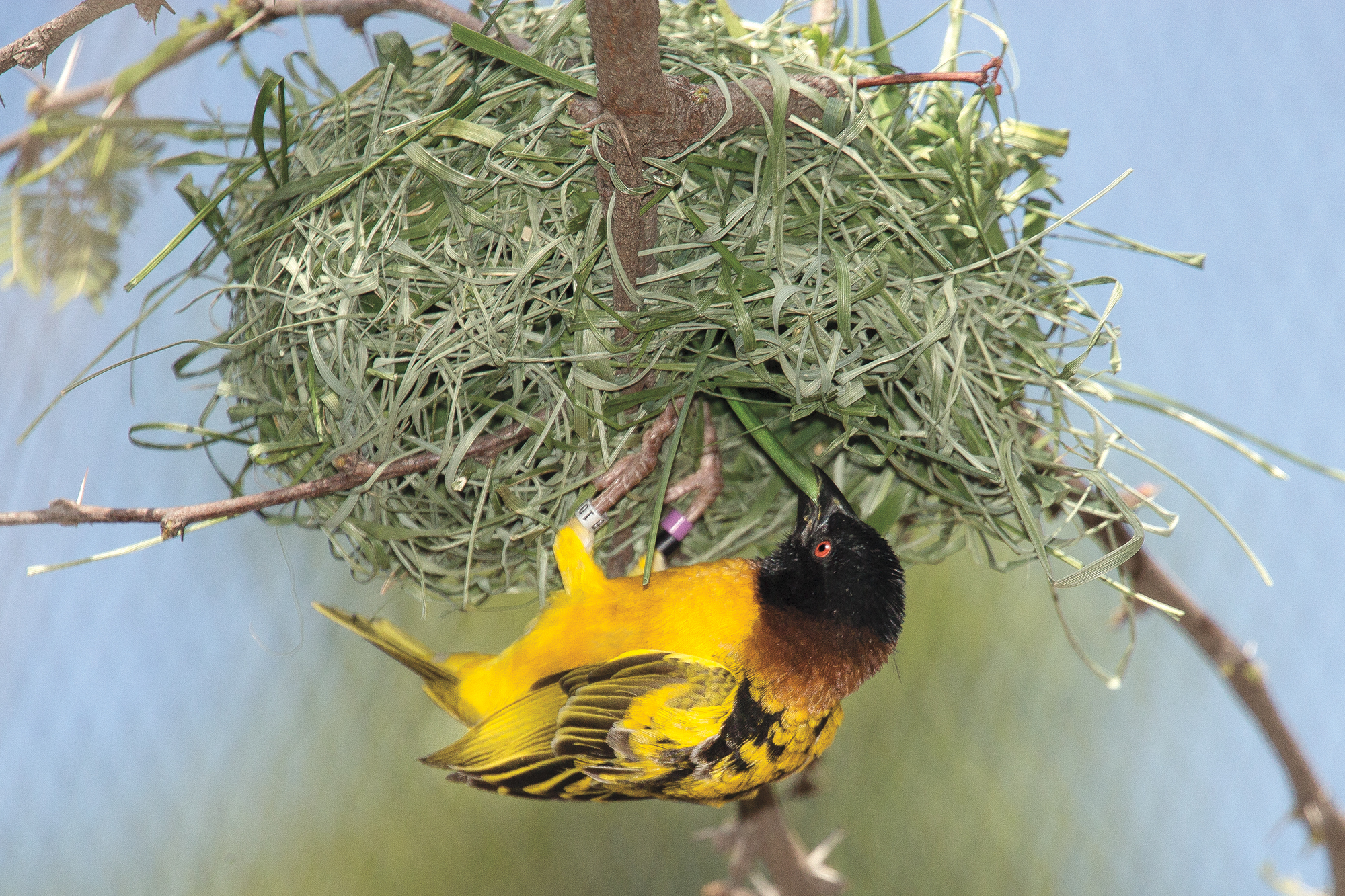
BIRDS AT WORK
The black-headed weaver birds spend much of their day gathering, transporting, and weaving bits of grass to create amazing nests.
Of Monkeys, Magpies, and More
As you stroll into Acacia Woodland, you may hear some of its residents even before you see them. Against the backdrop of camel thorn acacia trees, this habitat is home to an expansive walk-though aviary. All the busy activities—nest building, mate seeking, turf defending—are set to the soundtrack of chirps, peeps, squawks, and twitters (the feathered kind). As the black-headed weavers ply their trade building nests—hanging upside-down from the structures—their back-and-forth chattering serves as play-by-play commentary. Waxbills, starlings, magpie mannikins, and other feathered friends add to the symphony of calls as they go about their business. The aviary is vertically designed to accommodate a large number of birds. More than 30 different species inhabit different levels of the aviary, from treetops to the ground.
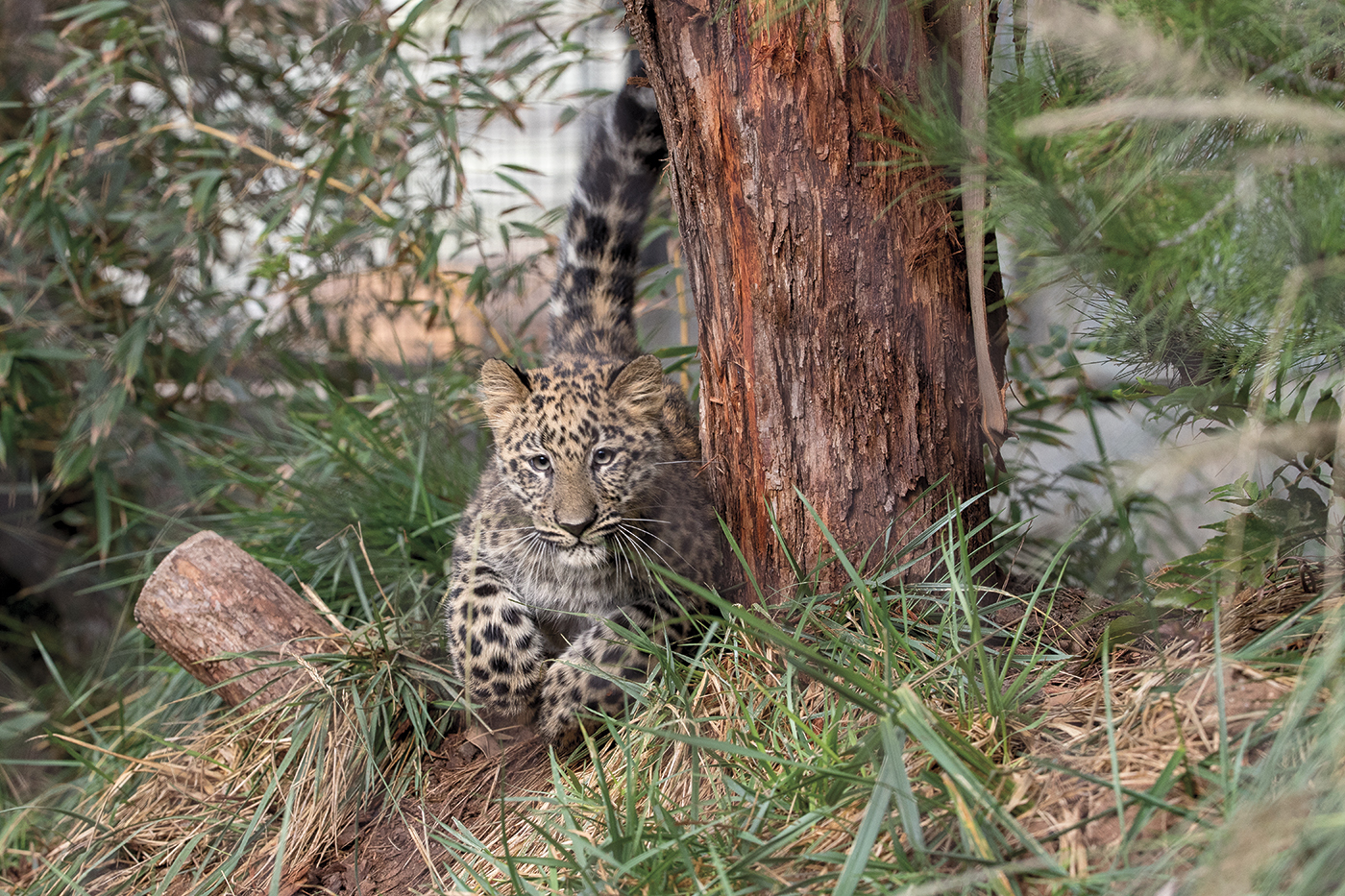
SPOT THE LEOPARD
In this carefully landscaped habitat, it’s easy to see how a leopard’s spots help it stay hidden.
Continuing through the Woodland, glance toward cozy alcoves and other convenient lounging spots and you may land upon a pair of yellow-gold eyes—those of a magnificent leopard—looking back at you. The big cats’ leisurely pose is belied by the intensity of their gaze.
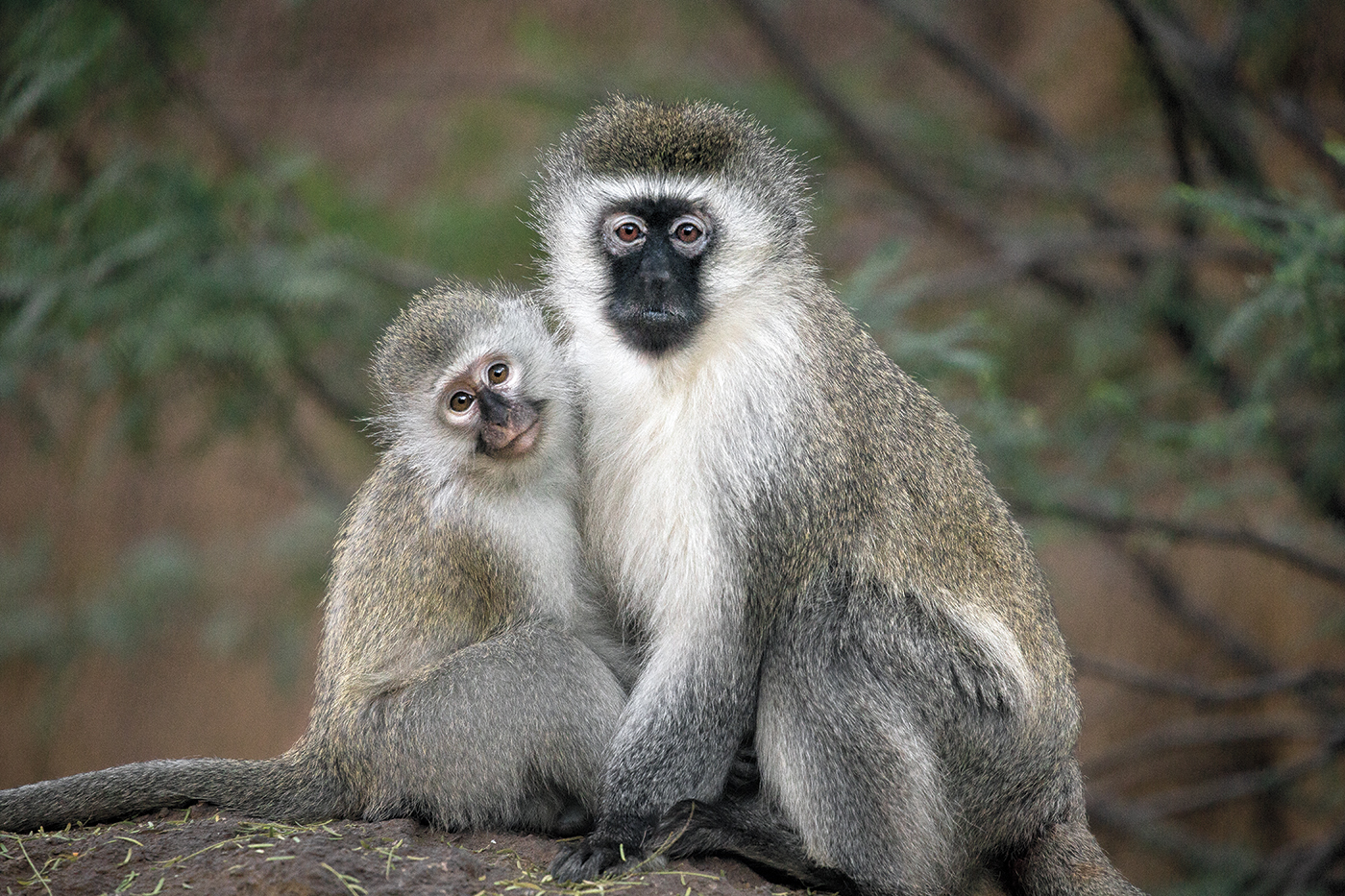
THE PAUSE THAT REFRESHES
In between wrestling bouts, the vervet monkeys find time for a quiet cuddle.
The next exhibit, which houses vervet monkeys, is the exact opposite of leisurely. The gregarious group engages in grooming, pole climbing, spirited games of chase, and, in the case of the youngsters, wrestling matches that rival the best the WWE could offer. Gourd puzzles and other enrichment placed throughout the area keeps these clever monkeys engaged.
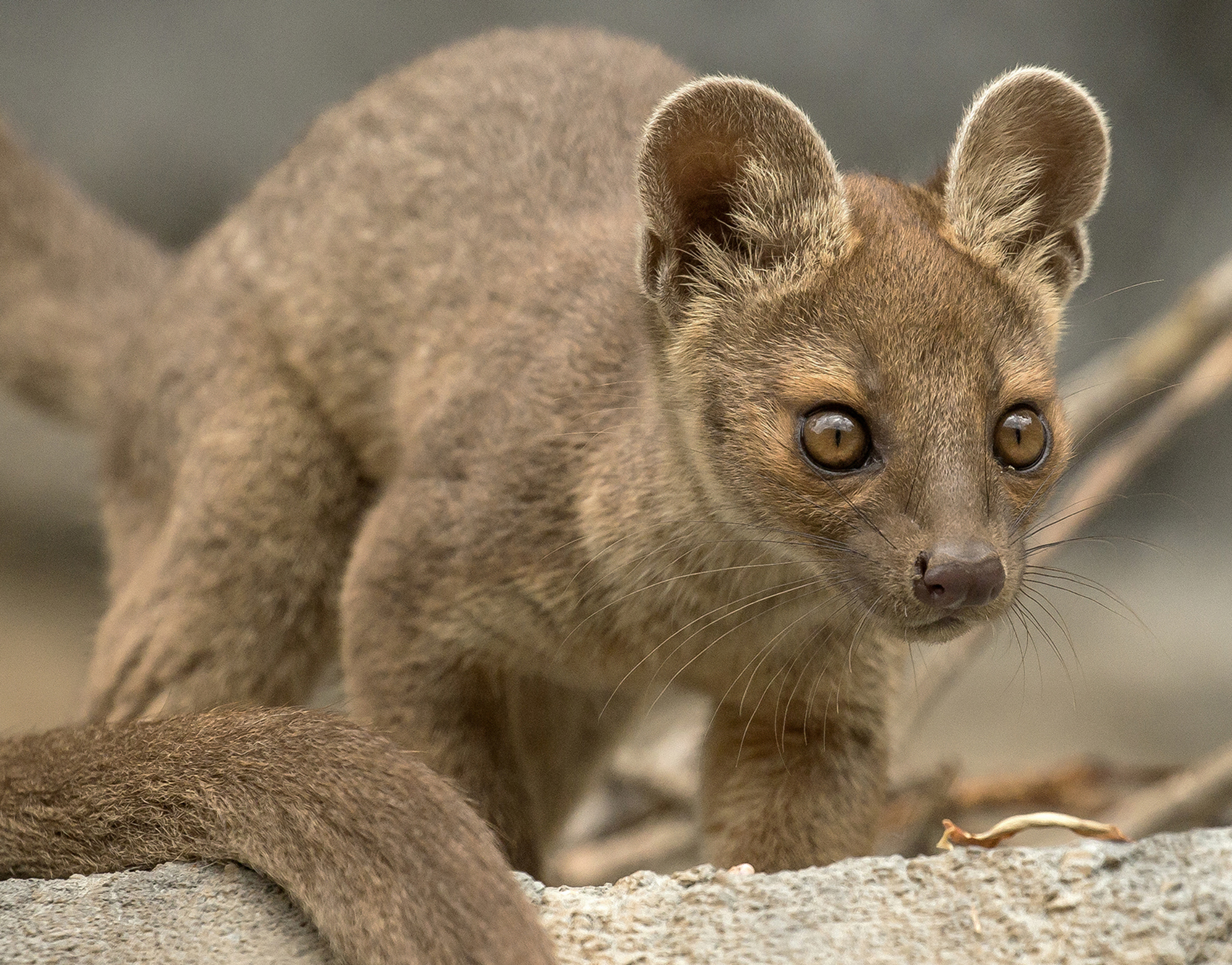
FASCINATING FOSSA
A visit to Africa Rocks offers a rare glimpse of Madagascar’s top predator.
Mad About Madagascar
The Madagascar Forest habitat in Africa Rocks represents elements from two types of forest: dense rain forest and dry spiny forest. As you pass either of the two particular exhibits, you’re in for a true “is-that-a-cat-or-dog-or-monkey?” moment. Stop to study the enigmatic fossa, a muscular, stealthy carnivore that also happens to be the apex predator of Madagascar. Their golden eyes seem to glow with secrets that this charismatic creature is not sharing.
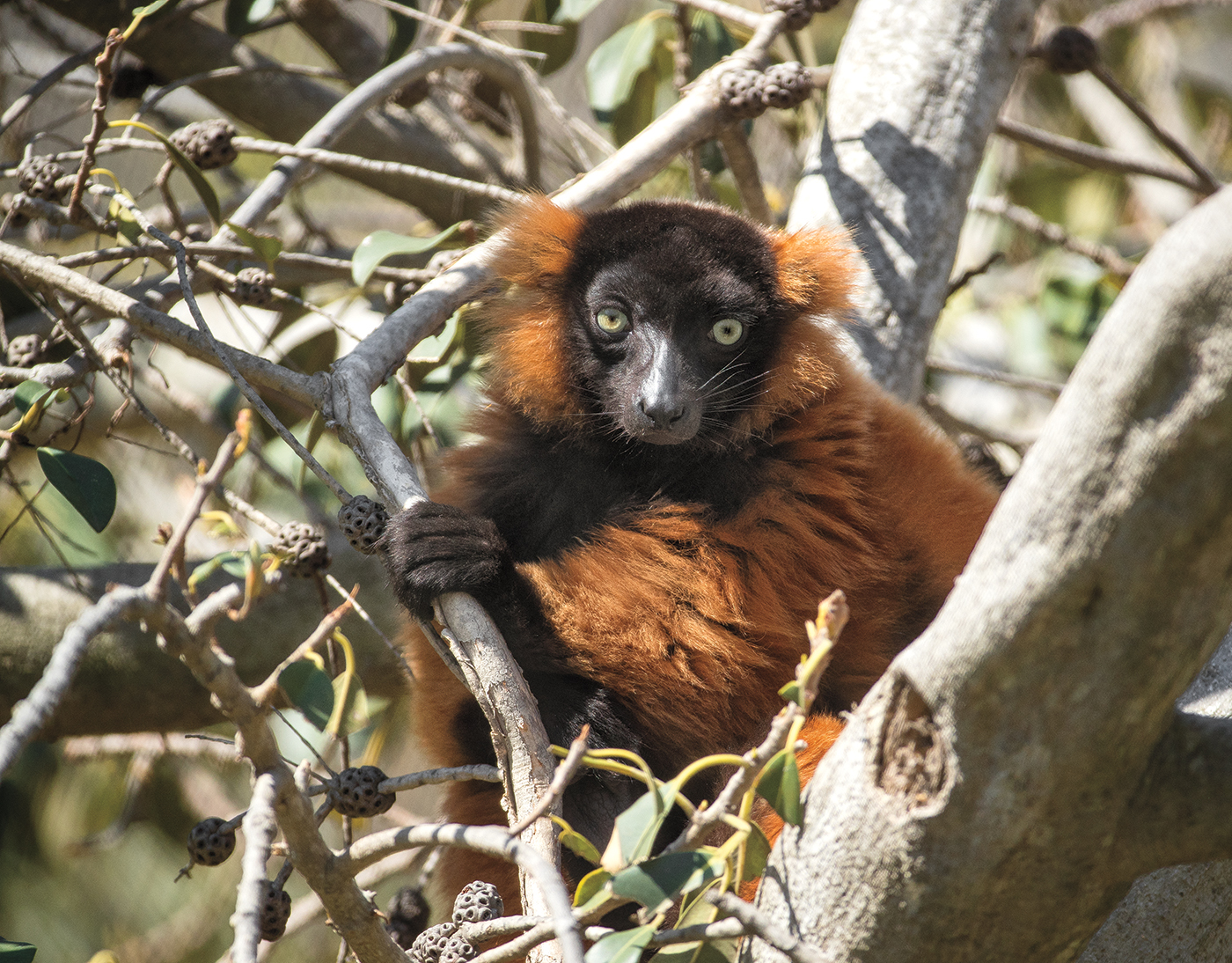
THE RUFF LIFE
Burnished beauties, the red ruffed are one of five species of lemurs living at Africa Rocks.
Then, you’ll want to “move it, move it” over to the lemur habitat, where red ruffed lemurs relax in the grass, and misters offer a cooling respite for the ring-tailed lemurs as they enjoy some shade. You might even be treated to an exhibition of Spiderman-level leaps from pole to pole as our irrepressible sifakas make their way around with flair that rivals a Cirque du Soleil performance.
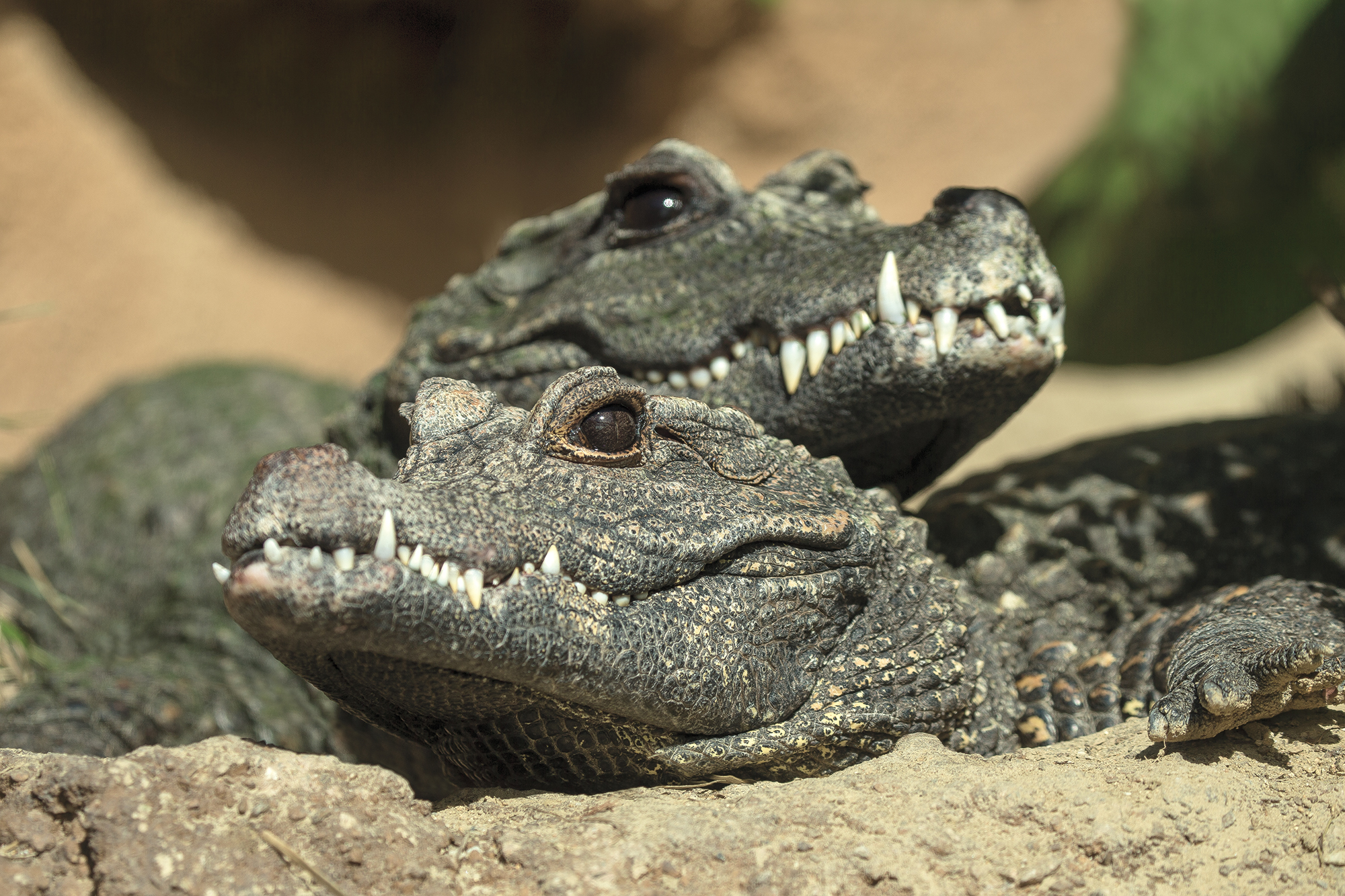
OH, SNAP!
African dwarf crocodiles catch some rays on the beach of their habitat.
Cool Customers
The pathway leads to the West African Forest, where animals and plants from that area’s rain forests, dense lowland forests, coastal mangroves, rivers, swamps, and wetlands make their home. Come eye to eye with a real blast from the past, the prehistoric-looking African dwarf crocodile. Whether gliding through the water or basking on the beach, these reptiles are fascinating. This year, the Zoo welcomed its first-ever hatching of dwarf crocodile babies, and these are definitely the cutest crocs you’ve ever seen!
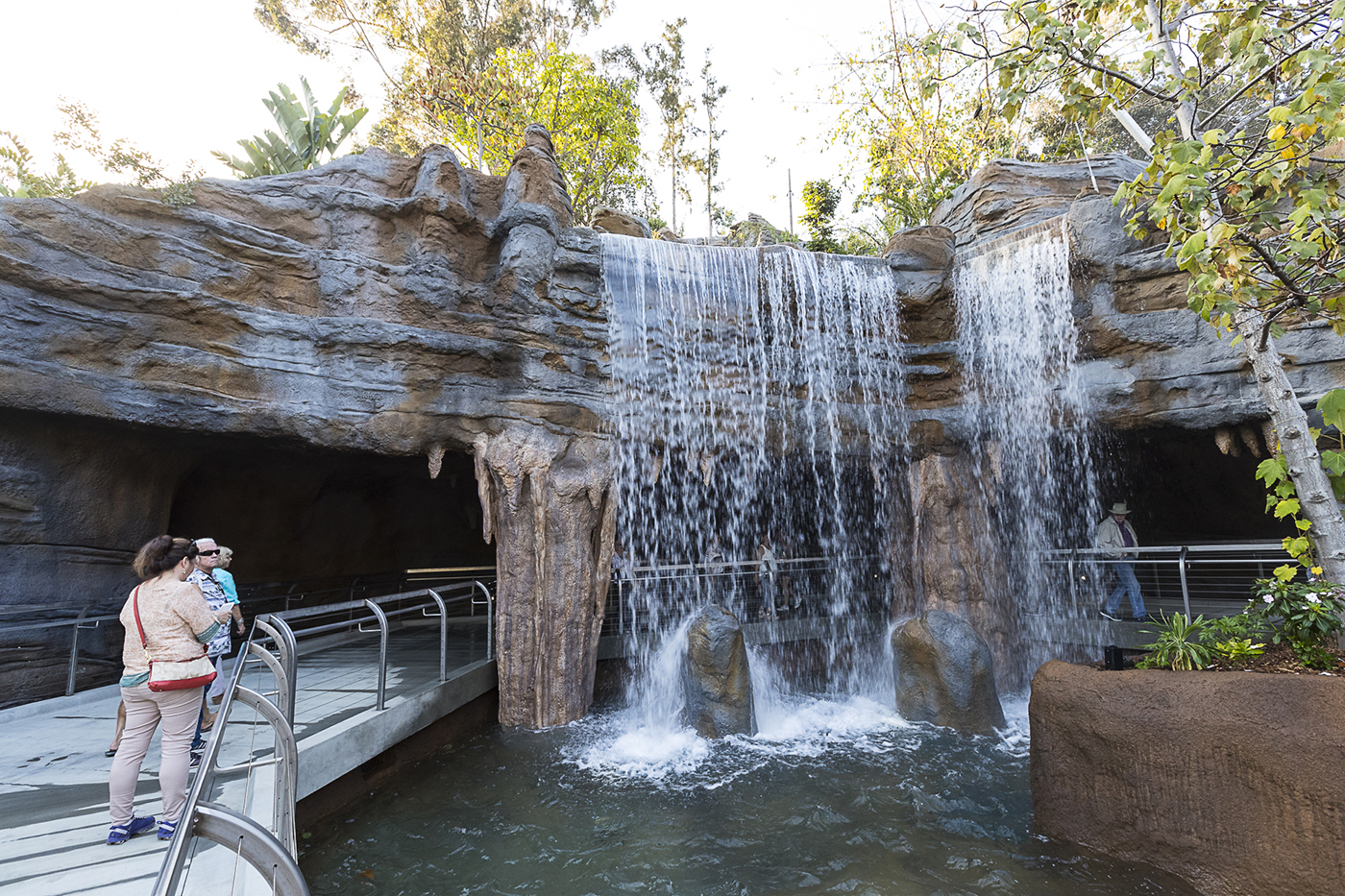
GO WITH THE FLOW
A path behind Rady Falls leads to a refreshing, one-of-a-kind view through cascading water.
Be sure to take the time to spot the Madagascar big-headed turtle and the West African mud turtle, two interesting species that share an impressive watery home in Rady Madagascar Habitat and Falls. There’s also a refreshing stop along your route to the next habitat. You can walk behind Rady Falls, a 65-foot-tall waterfall, into a cavern-like grotto to get a one-of-a-kind view through a wall of tumbling water.
Penguin Place
Your next stop is Cape Fynbos, and its star inhabitants are dressed to the nines. Whether they’re waddling on the beach or zipping through the water like pint-sized torpedoes, our African penguins at the Dan and Vi McKinney Penguin Habitat are showstoppers. Linger by the glass window at the exhibit’s beach to watch the goings-on of our highly social penguins. Watch carefully, and see if you can catch a bit of drama that may unfold: beak-to-beak tussles over potential mates and/or food, “flirting,” or simply “hey, this is my spot!”
Then explore the wide, underwater viewing area—it’s a whole new world, and the penguins’ movements and interactions are different, too. Zooming through the water, they seem to be engaged in a game of tag or catch-me-if-you-can. They zig and zag over, under, and between the large fish that share the saltwater realm—and the latter don’t seem to notice a bit. Among the pool’s gilled denizens are leopard sharks. These are a species native to Southern California, but they are closely related to the similar gully sharks of South Africa, which peacefully share habitat with penguins along the coastline there. The slow, gentle movements of the sharks, as well as the giant kelpfish, ocean whitefish, and opaleye in the pool, are a sort of smooth bass line to the high energy beat the penguins lay down.
Lemurs leaping, baboons basking, weavers…well, weaving, leopards lounging, and crocs cruising, all surrounded by fantastic flora. Africa Rocks, indeed!


